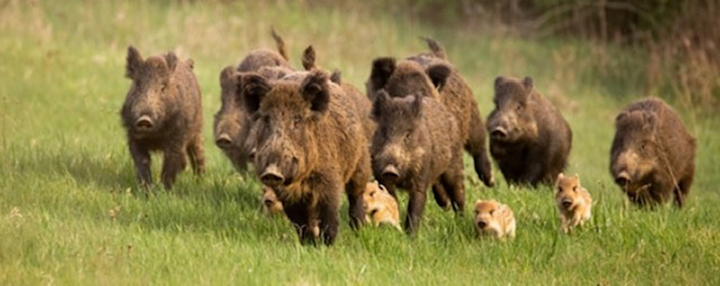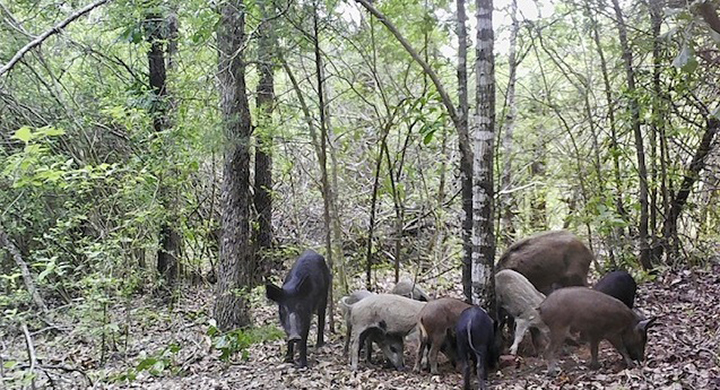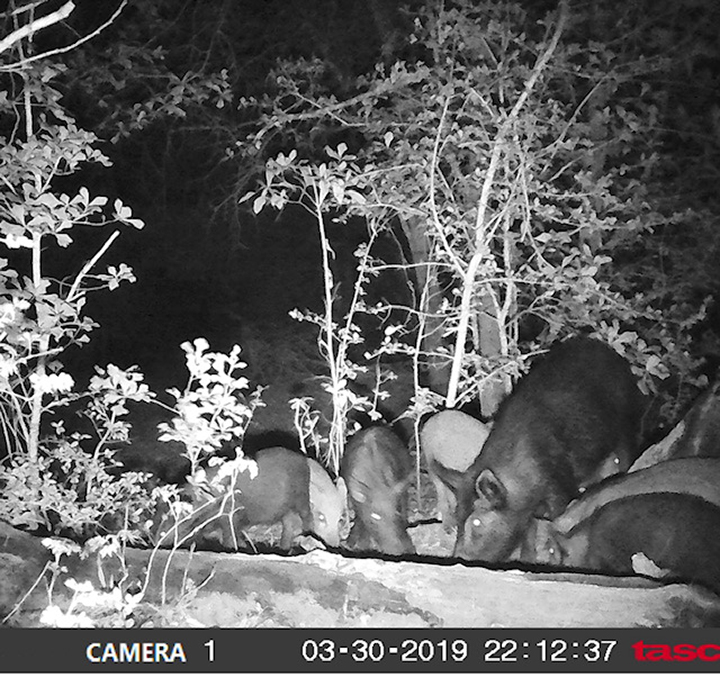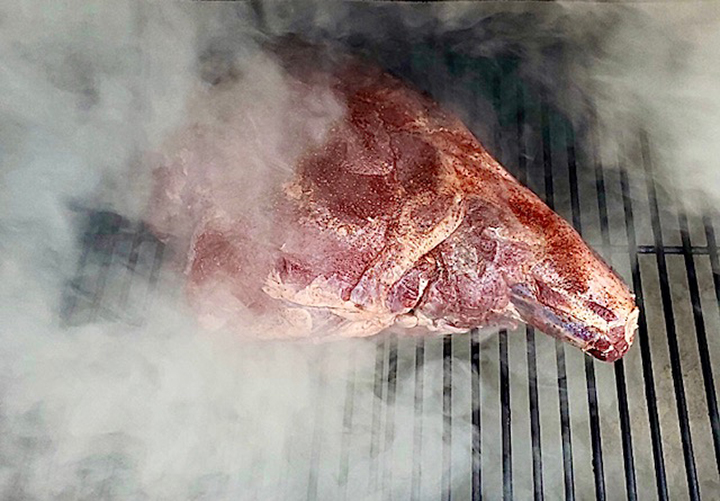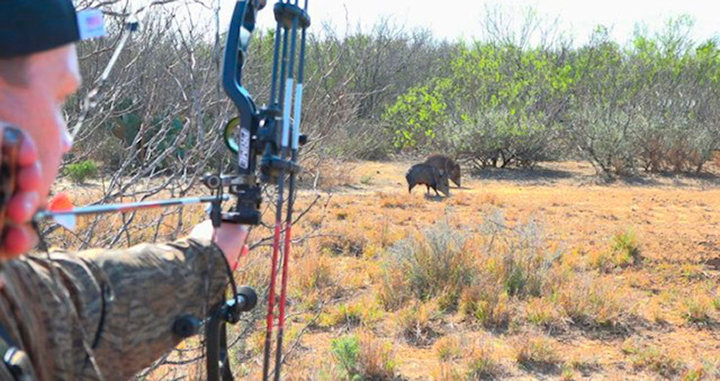The How and Why: Bowhunting Wild Hogs
Wild hogs have occupied the American landscape since its earliest days. At one time domestic, these resilient animals have multiplied at insane levels. There is a saying: “There are those who have hogs and those who are going to have hogs.”
No truer words have been spoken, especially for the southern United States.
What separates bowhunters from most archers is that they like to shoot their bows at animals. They tote their bows into the woods, fields, and mountains in search of deer, elk, and other game animals. And it can be tough to get a shot, much less harvest an animal with a bow. The inherent challenge is what it’s all about.
I cut my teeth hunting hogs in the Texas hill country and the brushy south Texas region, and it has paid dividends: it’s fun, challenging, and provides a lot of tasty options for the table. It’s also made me a better deer hunter.
Hog hunting with a bow is a fantastic activity that makes for a great sport. Hogs are tough, elusive, and plentiful. There is a lot to know and love about chasing these agile creatures.
Outwearing Their Welcome
Can you say “invasive species?” In areas with wild hogs, there is usually destruction and chaos. They root around tearing up fences, crops, and lawns. Ask any farmer or rancher and they’ll tell you they’re a nuisance. Even some hunters will say the same. I know they’ve sabotaged many deer hunts for me. While bowhunting hogs won’t put a dent in the population, it doesn’t hurt. It’s not only fun, but many landowners with resident hogs are more than willing to let you hunt them with a bow, as bowhunters are humanly less invasive than trappers and gun hunters.
Abundance
According to Texas A&M AgriLife Extension, feral sows reach sexual maturity at 6 to 8 months of age and produce 1.5 litters–per–year on average. Litters range from 6-14 piglets. Do the math on that. Getting a local pig problem under control takes a lot more than a few bowhunters. In the meantime, that’s a ton of archery hunting opportunities.
Practice
Bowhunting wild hogs is a great way to increase or maintain your skills during the off-season. Many states allow you to hunt hogs year-round. It’s also good practice because hogs are a formidable foe in the woods. They present an incentive to maintain your equipment, exercise woodsmanship, and practice shot prep and placement. What a great opportunity, and an enjoyable one at that.
The Challenge
You will be hard-pressed to find smarter animals in the woods than feral hogs. Their sense of smell and sound can end encounters in an instant. This makes them a great means of sharpening your hunting and shooting skills. There is no surprise that many deer hunters bow hunt hogs. They not only find it enjoyable, but it’s great preparation for arrowing whitetails in the fall and winter. Pounding a target can only help your shooting so much. Matching wits with such a resilient and elusive animal is great for fine–tuning your bowhunting game.
The Meat
The meat from feral hogs is flat-out delicious. In fact, except for old large boars, it’s less gamy and more tender than most venison cuts. While the best-eating hogs are the younger ones, big boars can be tasty as well, so long as you prepare them right. The food options for wild pigs are vast, including pork chops, ham, ribs, and loins. The possibilities for ground pork are limitless. It’s also great alone or mixed with venison for both ground and link sausage. With small to medium size hogs, the meat is very forgiving as well, yielding tender and juicy dishes whether from the grill, smoker, slow-cooker, or oven. Arrow a wild hog and you’ve hit the culinary jackpot.
Hog Sign and Where to Find Them
Wild hogs prefer moist thick cover. Late and the day and early in the morning, they can also be found in fields and on hillsides. In states where it’s legal, you can find and hunt them at game feeders both day and night.
Hogs can’t sweat, so they will spend a lot of time in the shade during hot days. However, shade isn’t enough, and they will intermittently visit wallows and other water sources to cool off. This makes summer a great time to hunt them. Additionally, look for rubs on trees where they scrub off the mud from their wallows. Look for rooted up earth and wallows, and you’ll likely have a good ambush spot.
Hog tracks are often the best sign. While they are similar to deer tracks, feral hog tracks appear more round in overall shape than deer tracks (which are more oval or heart–shaped). The tips of the toes of hog tracks are more rounded than deer tracks, which come to an obvious point (shown above). The dewclaws of wild hogs are also set wider than deer in proportion to overall track width.
When to Find Them
For hunting from a blind or stand, early morning and late evening are the best times to hunt feral hogs (especially the latter). However, for spot-and-stalk and still hunting, areas around food and water sources are great locations, especially during the summer months.
Be Silent
As mentioned, hogs have poor eyesight. However, it’s more than compensated by their incredible hearing and a pretty good sense of smell. When pressured, hogs have learned to bolt at the faintest noise or odor. It’s imperative to be still and quiet. Whether hunting hogs from a blind, treestand, or on foot, keep noise to a minimum and seek to maintain a downwind position.
Spot-and-Stalk
Spot-and-stalk hunting wild pigs is hard work, but it’s a blast. Locate heavy trails and follow them. They will often lead you to bedding areas in heavy cover. As with food and water sources, these areas can be a bonanza for careful stalks. If you play your cards right, you can find yourself in bow range of a group of feral hogs. This is a great mid-day strategy.
Shot Prep and Placement
Hogs are much different from deer. If you ignore this fact, you’ll often find yourself tasked with a long and arduous tracking job. For one, feral hogs have smaller lungs and a larger area of digestive organs (compared to a whitetail).
On small and mid-sized hogs, a good broadside shot will do the trick. Aim for the middle of the chest just above the front leg. If on target, such a shot will likely pierce both lungs and result in a good solid blood trail. For big boars, you have to worry about the notorious shield of armor encasing the vital organs. In this case, a quartering away shot is your best opportunity. In fact, for any hog, it’s a great choice. Place your sight pin on the midpoint at the back of the front shoulder. If executed well, this will strike the chest cavity and other vitals.
Miscellaneous
Large boars, especially those in the 200-pound and up category, don’t only offer a great challenge, they make great trophies for the wall, complete with tusks for interest.
Considering the bacteria present in pork, wear gloves when dressing and preparing feral hogs. This is especially true during the hotter months.
If you have little or no hog hunting opportunities in your state, visit Texas or one of the southeastern states. Florida, for example, has hog populations in every county – and they can even be hunted without a license in some areas.
Bowhunting wild hogs is a great way to challenge yourself as an archer. So, grab your bow and get downwind of one of the toughest game animals around. You’ll be glad you did.
Based in Texas, Jerald Kopp is President of 1st Light Hunting Journal. His articles cover a variety of topics about hunting and the outdoor lifestyle. Jerald is an avid outdoorsman with deer hunting and whitetails being by far his greatest passion. He was introduced to hunting and fishing at an early age and has been enjoying it for 40+ years. In 2005, he established the Empowerment Outfitter Network (EON) – a faith-based non-profit organization that provides hunting opportunities for disabled and terminally-ill children and youth. When not hunting, he spends his time traveling and enjoying life with Amy, his wife of over 30 years. Jerald and Amy have two adult daughters and a son-in-law.

